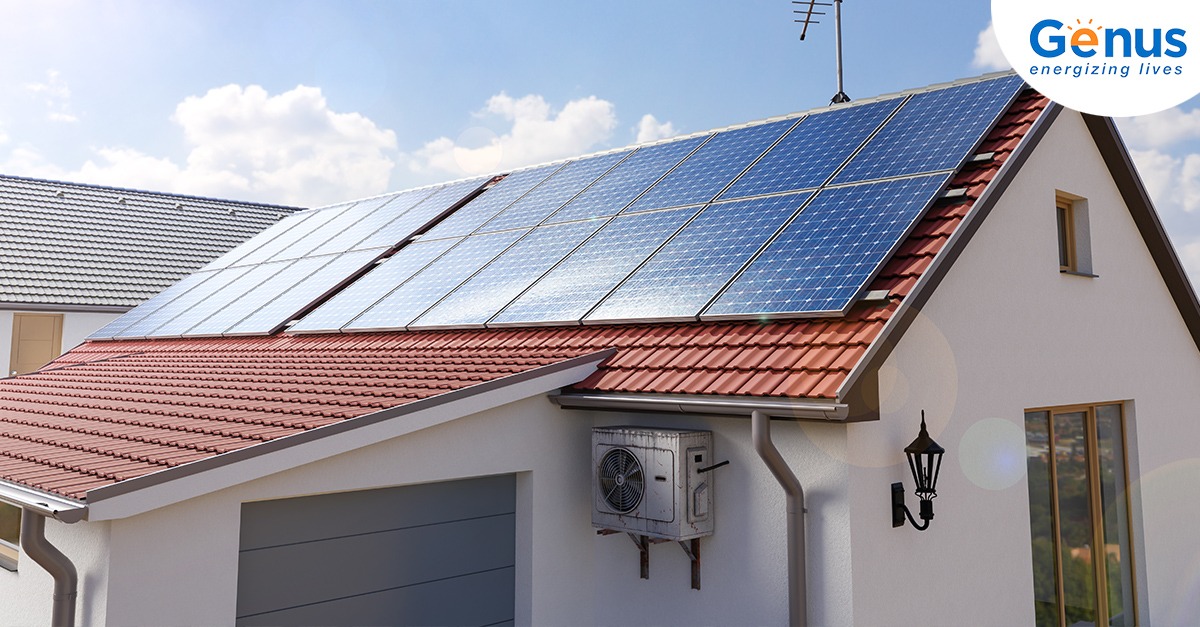
The market for bifacial solar panels has grown dramatically in recent years. Their ability to generate more electricity than traditional solar panels, while being installed in the same setting, is driving users towards adopting this new technology, just a decade after it hit the market. It is an emerging trend in which solar panels can absorb light from both sides and generate more electricity. While the bifacial solar panel price is quite high right now, the competition is increasing, and soon the prices will be comparable to traditional mono facial solar panels. To know more about them, read on.
What are Bifacial Solar Panels?
Monofacial or traditional solar panels generate electricity by capturing sunlight on only one side while the light that can’t be captured is reflected away. In a bifacial solar panel, solar cells are present on both sides. Due to this double glass solar panel, bifacial panels can absorb light from the sun and the light is reflected off the ground on the backside as well.
While they are capable of generating more electricity than traditional solar panels, they are not very suitable for owners considering a rooftop installation. Bifacial solar modules are effective in pergolas and ground-mounted residential applications and are best used in utility-scale or commercial applications.
Also Read: Top Things to Know About Commercial Solar Financing
Bifacial Solar Panels Design
Although generally made of monocrystalline cells, bifacial solar panels look slightly different from traditional monocrystalline silicon panels. They have a very slim profile and there are frameless bifacial solar panels as well to reduce shading as much as possible.
Also Read: A Helpful Comparison between Monocrystalline and Polycrystalline Solar Panels
They are made with a clear back sheet or have a dual-glass design to try and capture the most energy. They require the least amount of shaded space on the front and back and is the reason why newer racking systems use smaller junction boxes, vertical support only on the corners, and narrower support rails to reduce shading on the backside of modules.
Benefits of a Bifacial Solar Panel
Bifacial solar modules are the future of the solar industry with more and more applications happening around the world. Here are some of the reasons why:
Efficiency
The best bifacial solar panels equipped with solar trackers can yield 27 per cent more solar energy than a traditional solar panel. Even without a tracker, double glass solar panels are 11-12% more efficient. They can reduce the Levelized Cost of Energy (LCOE) and work normally in higher temperatures as well.
Durability
The tempered glass in bifacial solar panels are quite durable and apart from absorbing light, can also act as a reliable shield in bad weather conditions.
Also Read: Effect of Weather on The Performance of Solar Panels
Design
Its sleek design allows sunlight to pass directly and provides an inherent benefit of not changing the aesthetics of the facade. Their design is also the reason why bifacial solar panels are used for different purposes like awnings, barriers, or pergolas.
Ability to Accommodate
The performance of a bifacial solar module is independent of the installation angle, and hence, the panels can be installed at 90 degrees as well. Since fewer panels are required for fulfilling the energy requirements, the space is utilised efficiently.
Cost-effectiveness
Bifacial panels with solar trackers can reduce power costs by 16%. Owners also benefit because the glass is 20-30% cheaper than traditional sheets. Due to fewer panels, less labour and maintenance is required, which further reduces the overall costs.
Also Read: Calculating Solar Panel Cost Made Easy
All in all, bifacial solar panels are one of the newest innovations in the solar energy space and they are projected to grow at an exponential rate thanks to their benefits, relatively low cost, and high energy production capability. With both sides of the bifacial solar module capable of absorbing light and generating electricity, it is soon going to be used in residential rooftop settings as well.
